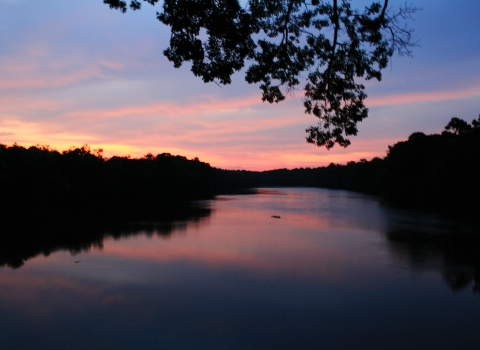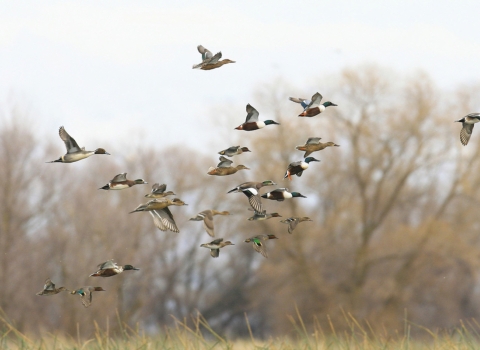A Southwest Region (Arizona, New Mexico, Oklahoma, Texas) www.fws.gov/southwest/ For Release: February 21, 2014 Contacts: Adam Zerrenner, 512-490-0057,
Adam_Zerrenner@fws.gov Lesli Gray, 972-569-8588,
Lesli_Gray@fws.gov
Service Announces Listing of Georgetown and Salado Salamanders As Threatened Under the Endangered Species Act Recognizing County and City Efforts to Protect Water Quality, Agency Proposes Special Rule to Allow Limited Take of the Georgetown Salamander
The U.S. Fish and Wildlife Service today announced it is listing the Georgetown and Salado salamanders, two small amphibians found in springs and caves around the Edwards Aquifer in central Texas, as threatened under the Endangered Species Act, due to degradation of their habitat and changes in water flow and quality. At the same time, the Service is proposing a special rule for the Georgetown salamander that would allow development activities to continue if they are in compliance with ordinances adopted in December by Williamson County and the City of Georgetown to protect water quality. These ordinances include steps to reduce contamination from spills and establishment of buffer zones around the species’ habitat. “The Service’s decision to list these species reflects the best available science and a careful evaluation of the comments received from the public ,” said Adam Zerrenner, the Service’s Austin Field Office Supervisor. “We will continue to work with local communities, landowners and others to ensure a healthy Edwards Aquifer for the communities and the species that depend upon it.”
The Service originally proposed to list the species as endangered in 2012, which means they were considered at risk of extinction throughout all or a significant portion of their range, but new scientific information received during the comment period on the proposal indicates the species are threatened, meaning they are at risk of becoming endangered in the foreseeable future. The Georgetown and Salado salamanders are unique to Texas and entirely aquatic , living their entire lives in springs and caves fed by the northern segment of the Edwards Aquifer. Biologists have found the Georgetown salamander in 15 springs along five tributaries to the San Gabriel River (South, Middle, and North Forks; Cowan Creek; and Berry Creek) and in two caves in Williamson County. The Salado salamander has been identified in four spring sites near the Village of Salado and three springs farther upstream on Salado Creek in Bell County. U.S. Fish and Wildlife Service News Release Public Affairs Office PO Box 1306 Albuquerque, NM 87103 505/248 - 6911 505/248 - 6915 (Fax) Reduced water quality, increased sedimentation, and altered flow regimes are the primary threats to the two species. Recent drought conditions and human population growth also have negatively affected water resources, reducing the quality and quantity of available habitat for the salamanders.
The ESA prohibits take of threatened and endangered species including killing, harming, or harassing them; however, the Service will work with landowners and developers to obtain permits that allow incidental take of species from otherwise legal activities if they develop an approved Habitat Conservation Plan containing measures designed to avoid, reduce and/or mitigate impacts and ensure the long - term health of the species. The final rule for the Georgetown and Salado salamanders will publish in the Federal Register on February 24, 2014, and will become effective 30 days after publication. A 60 - day public comment period on the proposed special rule will begin with its publication in the Federal Register on February 24, 2014. The Service will publish the final critical habitat rule for the Georgetown and Salado salamanders in a separate Federal Register publication. Copies of the final rule and information on the proposed special rule for the Georgetown salamander may be found at the Service’s website at www.fws.gov/southwest/es/AustinTexas/. Public comments on the proposed special rule for the Georgetown salamander must be submitted no later than April 25, 2014.



